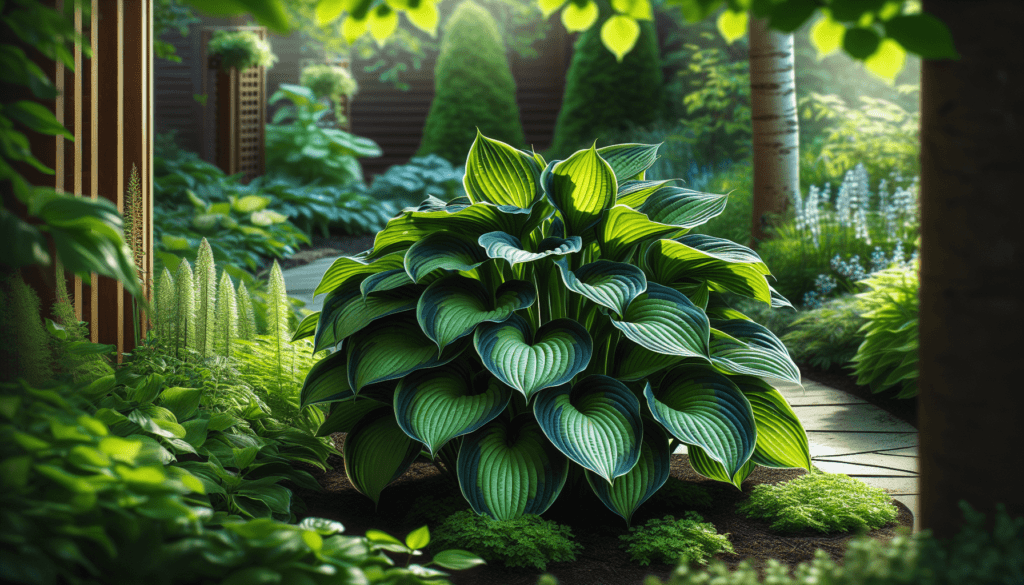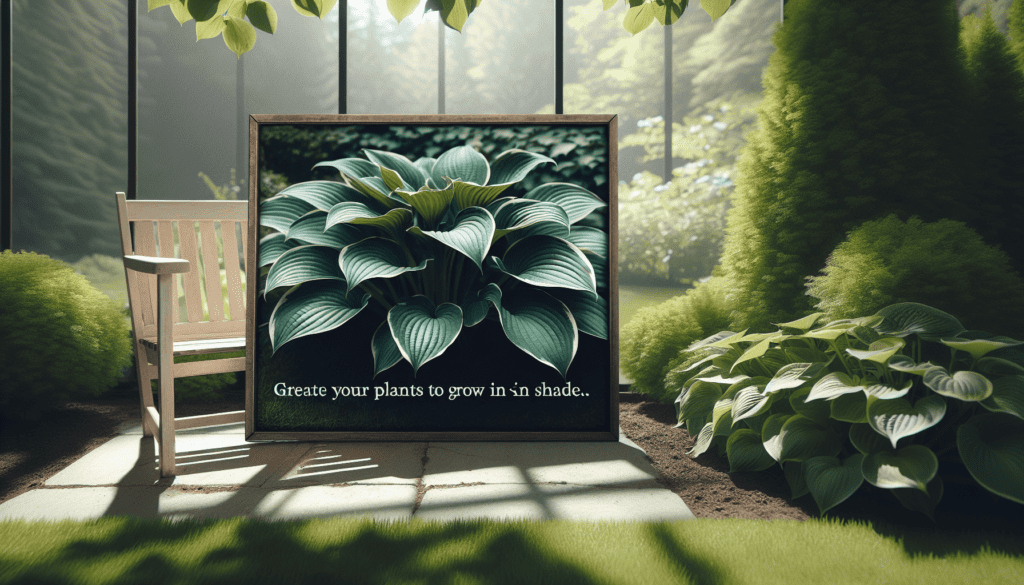Have you ever wondered what plants thrive best in shaded areas of your garden? Whether you have trees providing shade or just a lack of sunlight due to surrounding structures, there are plenty of plant options available. In this article, you will discover the best plants that thrive in shade, allowing you to create a beautiful and flourishing garden oasis even in areas with limited sunlight.

Benefits of Having a Shaded Garden
Having a shaded garden offers numerous benefits for both you and your plants. Shade-loving plants are well-suited for these environments, making them low maintenance and easy to care for. Additionally, a shaded garden can provide relief from the scorching sun during the summer months, creating a cool and relaxing space for you to enjoy.
When you plant shade-loving varieties, you do not have to worry about constantly watering or protecting them from the harsh sun. These plants have adapted to thrive in lower light conditions, ensuring that they remain healthy and vibrant without requiring excessive attention. By choosing the right plants for your shaded garden, you can create a lush and inviting outdoor space that is both visually appealing and rewarding to maintain.
Benefits for You:
- Enjoy a cool and relaxing outdoor space during hot summer days
- Low maintenance plants that require minimal care and attention
- Create a lush and vibrant garden with ease
Benefits for Plants:
- Adapted to thrive in shaded environments
- Less susceptible to sunburn or heat stress
- Healthier and more vibrant growth with less effort
Choosing the Right Plants for Shade
When selecting plants for a shaded garden, it is essential to consider the level of shade in the area. Different plants have varying shade requirements, so understanding the conditions of your garden will help you choose the right varieties. Some plants prefer dappled shade, while others thrive in deep shade or partial shade.
Before making any purchases, take note of the amount of sunlight your garden receives throughout the day. This will help you determine the type of shade your plants will be exposed to and guide your selection process. Additionally, consider the soil type and moisture levels in your garden to ensure that the chosen plants will grow and flourish in their new environment.
Understanding Shade Levels:
- Dappled Shade: Light filters through overhead branches to create patches of sunlight and shade
- Deep Shade: Little to no direct sunlight reaches the ground, creating a dark and sheltered environment
- Partial Shade: Areas receive a few hours of direct sunlight per day, with the rest of the time in shade
Factors to Consider:
- Amount of sunlight the garden receives
- Soil type and moisture levels in the garden
- Shade preferences of the selected plant varieties
Top Plants for Shaded Gardens
Now that you understand the benefits of having a shaded garden and how to choose the right plants, let’s explore some of the best options for creating a thriving garden oasis in shaded areas. These plants are not only beautiful but also well-suited for low light conditions, making them ideal for shaded gardens of all types.
Hostas (Hosta spp.)
Known for their lush and vibrant foliage, hostas are a popular choice for shaded gardens. These plants come in a variety of colors, sizes, and textures, making them versatile and adaptable to different garden styles. Hostas prefer partial to full shade and thrive in moist, well-draining soil. With minimal care requirements, these plants are an excellent choice for adding texture and color to your shaded garden beds.
Ferns (Polystichum spp.)
Ferns are a classic choice for shaded gardens, thanks to their delicate fronds and graceful appearance. These plants thrive in moist, shady conditions and add a touch of elegance to any garden space. Ferns come in a wide range of shapes and sizes, making them versatile for various garden designs. Whether you choose the classic Boston fern or the Japanese painted fern, these plants are sure to enhance the beauty of your shaded garden.
Astilbes (Astilbe spp.)
Astilbes are beloved for their fluffy, plume-like flowers that bloom in shades of pink, red, and white. These plants are well-suited for partial shade and thrive in moist, fertile soil. Astilbes add a pop of color to shaded garden beds and attract pollinators like bees and butterflies. With their long-lasting blooms and low maintenance requirements, these plants are a great addition to any shady garden.
Bleeding Hearts (Dicentra spectabilis)
Bleeding hearts are charming perennials that thrive in partial to full shade. Known for their heart-shaped flowers in shades of pink and white, these plants add a romantic touch to shaded garden beds. Bleeding hearts prefer rich, well-draining soil and require regular watering to thrive. With their unique and captivating blooms, these plants are a favorite among gardeners looking to add a whimsical element to their shaded gardens.
Coral Bells (Heuchera spp.)
Coral bells are versatile plants that thrive in partial shade and come in a variety of colors and leaf patterns. These plants are valued for their attractive foliage, which ranges from deep burgundy to lime green and silver. Coral bells prefer well-draining soil and add a pop of color to shaded garden beds. With their evergreen leaves and delicate flowers, these plants are a beautiful and low maintenance addition to any garden.
Lungworts (Pulmonaria spp.)
Lungworts are hardy perennials that thrive in shady conditions and produce attractive, spotted foliage. These plants prefer partial shade and moist, well-draining soil to flourish. Lungworts bloom in shades of blue, pink, and white, attracting bees and other pollinators to the garden. With their unique leaves and early spring blooms, these plants are a valuable asset for adding interest and color to shaded garden beds.
Planting and Caring for Shade-Loving Plants
After selecting the right plants for your shaded garden, it is essential to properly plant and care for them to ensure their health and growth. Follow these tips to successfully establish your shade-loving plants and create a flourishing garden oasis in shaded areas.
Planting Tips:
- Choose a location with the appropriate level of shade for the selected plants
- Ensure the soil is moist, well-draining, and amended with organic matter
- Dig a hole twice as wide as the plant’s root ball and place it at the same depth as in the container
- Water thoroughly after planting to help the roots establish and prevent transplant shock
Watering and Maintenance:
- Water shade-loving plants regularly, keeping the soil consistently moist but not waterlogged
- Mulch around plants to retain soil moisture and suppress weeds
- Monitor for pests and diseases, treating promptly if necessary
- Fertilize plants in spring with a balanced fertilizer to promote healthy growth
Seasonal Care:
- In the spring, remove any dead or damaged foliage to encourage new growth
- Divide clumping plants like hostas and astilbes every few years to maintain vigor
- Prune back ferns and bleeding hearts after flowering to encourage fresh growth
- Protect delicate plants from harsh winter conditions with a layer of mulch or frost cloth

Creating a Beautiful Shaded Garden Oasis
By selecting the right plants, understanding their care requirements, and following planting tips, you can create a beautiful and thriving garden oasis in shaded areas. Experiment with different combinations of shade-loving plants to add interest, texture, and color to your garden beds. With proper care and attention, your shaded garden will flourish and provide you with a cool and relaxing space to enjoy throughout the year.
Remember to enjoy the process of gardening and take pride in the lush and vibrant garden you have created. With the right plants and care, you can transform any shaded area into a flourishing and inviting outdoor space that you can enjoy for years to come. Happy gardening!

